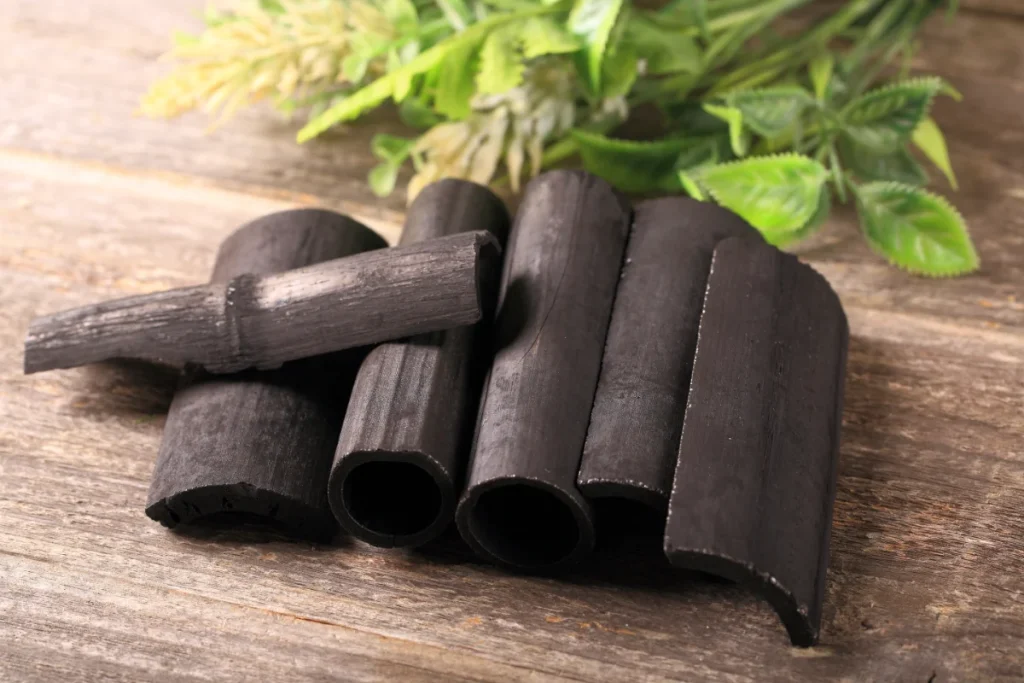
How to Make Bamboo Charcoal at Home?
Introduction
Bamboo charcoal is a natural and renewable resource that undergoes a transformative process to become a versatile material. It’s not just charcoal; it’s a sustainable solution with a range of applications. So, why is it interesting, and how can you make it yourself? Let’s find out.
What is Bamboo Charcoal?
Bamboo charcoal is a natural, porous substance derived from bamboo plants. Known for its absorbent and purifying properties, it’s used in various products like air purifiers, water filters, and skincare items. Bamboo charcoal is believed to effectively trap impurities and odors, making it a popular eco-friendly choice for a range of applications.
How Bamboo Charcoal is Made?
Ingredients Needed
- Bamboo stalks.
- Metal container with a lid.
- Firewood or sawdust.
Procedure
- Prepare Bamboo:
- Harvest mature bamboo stalks.
- Cut bamboo into small manageable pieces.
- Build a Kiln:
- Dig a pit or use a metal container with a lid.
- Place the bamboo pieces vertically in the container.
- Cover with Material:
- Cover the bamboo with a layer of firewood or sawdust.
- Ensure good insulation to prevent the entry of air.
- Seal the Container:
- Place the lid tightly on the container.
- Seal any gaps with soil or clay to limit air entry.
- Start the Fire:
- Ignite the fire on top of the container.
- Control the Temperature:
- Gradually increase the temperature.
- Maintain a controlled, slow burn to carbonize the bamboo.
- Monitor the Process:
- Keep an eye on the container, adjusting airflow as needed.
- The process takes several hours.
- Cool and Retrieve:
- Let the container cool down.
- Retrieve the bamboo charcoal.
Note: Ensure proper ventilation to avoid harmful fumes. Safety is crucial during the process. So don’t compromise on safety measures at all.
Uses of Bamboo Charcoal
Odor Absorption:
Bamboo charcoal excels in odor absorption, making it a versatile solution for various applications. Whether used in air purifiers, shoe deodorizers, or refrigerator filters, its porous structure effectively captures and neutralizes unwanted smells. The natural adsorption properties of bamboo charcoal helps eliminate moisture and impurities, preventing the growth of odor-causing bacteria. Its efficacy in absorbing musty odors in closets, pet areas, and even car interiors has made it a popular and eco-friendly choice for combating unpleasant scents.
Purifying Air and Water:

Bamboo charcoal excels in purifying both air and water, making it a versatile natural solution. In air purification, its porous structure effectively absorbs pollutants, odors, and moisture, creating a fresher and cleaner environment. As a water purifier, bamboo charcoal filters impurities and contaminants, enhancing water quality by reducing odor and discoloration.
Soil Enrichment
Bamboo charcoal, a natural and sustainable resource, serves as an excellent soil amendment. Its porous structure enhances water retention, promotes nutrient absorption, and fosters a healthier microbial environment in the soil. Incorporating bamboo charcoal can contribute to improved soil fertility, making it a green choice for sustainable agriculture.
Benefits of Bamboo Charcoal
Natural and Eco-friendly:
Bamboo charcoal offers natural and eco-friendly benefits as a sustainable material. Its porous structure effectively absorbs and purifies air and water, reducing pollutants and odors. The cultivation of bamboo is environmentally friendly, requiring minimal resources and no pesticides. Bamboo is a fast-growing plant, that promotes reforestation and minimizes ecological impact. The use of bamboo charcoal in products like air purifiers and water filters provides an eco-conscious alternative, contributing to a healthier planet.
Health Benefits:
Bamboo charcoal boasts health benefits attributed to its natural absorption and purifying properties. It is renowned for its ability to absorb and eliminate toxins, odors, and impurities, promoting cleaner air and a healthier environment. In various wellness products, from air purifiers to bedding, bamboo charcoal is utilized to reduce allergens and create a more conducive atmosphere for respiratory health. Its antimicrobial properties make it an excellent addition to skincare products, aiding in the absorption of excess oil and impurities, and contributing to clearer and healthier skin.
Cautions and Tips for Using Bamboo Charcoal
When using bamboo charcoal, exercise caution and follow these tips for optimal results and safety.
Refreshing Bamboo Charcoal

Sun Exposure Method:
In this eco-friendly approach, harvested bamboo is exposed to the sun’s natural energy, harnessing its revitalizing properties. The bamboo undergoes a slow and meticulous process, absorbing the sun’s warmth and vitality. This method not only enhances the charcoal’s purifying abilities but also infuses it with a refreshing quality. The Sun Exposure Method ensures a sustainable and chemical-free creation, resulting in bamboo charcoal that breathes new life into its surroundings.
How Often to Refresh:
Refreshing bamboo charcoal is a simple yet effective practice that depends on its usage and environment. For air purifiers or deodorizers, consider refreshing every 4-6 weeks to maintain optimal absorption capacity. In humid climates or areas with strong odors, more frequent refreshments may be necessary. Regular refreshing ensures that bamboo charcoal continues to efficiently eliminate odors and pollutants, providing a sustained, refreshing atmosphere in your living spaces.
Conclusion
The journey into the world of bamboo charcoal reveals not only a simple and sustainable material but also a gateway to a greener lifestyle. From the art of making bamboo charcoal at home to exploring its diverse forms and applications, this guide highlights the versatility and eco-friendly nature of this remarkable resource.






